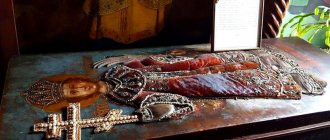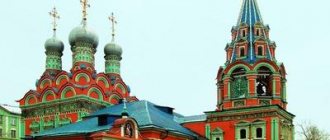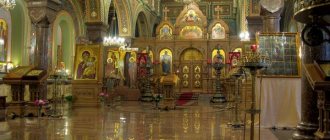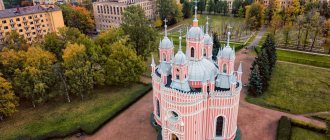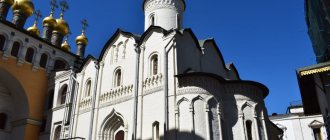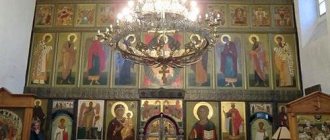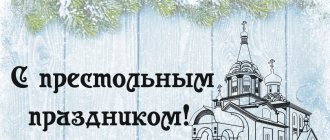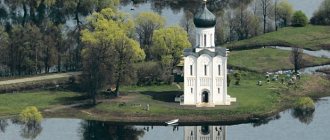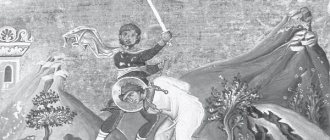Mir
Estonia Map loading in progress...
{"format":"leaflet","minzoom":false,"maxzoom":false,"limit":50,"offset":0,"link":"all","sort":[""], "order":[],"headers":"show","mainlabel":"","intro":"","outro":"","searchlabel":"\u2026 \u0441\u043b\u0435\ u0434\u0443\u044e\u0449\u0438\u0435 \u0440\u0435\u0437\u0443\u043b\u044c\u0442\u0430\u0442\u044b","default":"","import-annotation":false,"width ":"auto","height":"400px","centre":{"text":"","title":"""link":"""lat":58.75237779999999787605702294968068599700927734375,"lon": 25.331907799999999753026713733561336994171142578125,"icon":""},"title":"","label":"","icon":"","lines":[],"polygons":[],"circles":[ ],"rectangles":[],"copycoords":false,"static":false,"zoom":7,"defzoom":14,"layers":["OpenStreetMap"],"image layers":[] ,"overlays":[],"resizable":false,"fullscreen":true,"scrollwheelzoom":true,"cluster":true,"clustermaxzoom":7,"clusterzoomonclick":true,"clustermaxradius":80, "clusterspiderfy":true,"geojson":"","clicktarget":"","showtitle":true,"hidenamespace":false,"template":"","userparam":"","activeicon": "","pagelabel":false,"ajaxcoordproperty":"","ajaxquery":"","locations":[{"text":"\u003Cb\u003E\u003Ca href=\"/palomnik/%D0% 92%D0%BE%D1%81%D0%BA%D1%80%D0%B5%D1%81%D0%B5%D0%BD%D1%81%D0%BA%D0%B8%D0%B9_% D0%BA%D0%B0%D1%84%D0%B5%D0%B4%D1%80%D0%B0%D0%BB%D1%8C%D0%BD%D1%8B%D0%B9_%D1% 81%D0%BE%D0%B1%D0%BE%D1%80_(%D0%9D%D0%B0%D1%80%D0%B2%D0%B0)\» title=\»\u0412\u043e\ u0441\u043a\u0440\u0435\u0441\u0435\u043d\u0441\u043a\u0438\u0439 \u043a\u0430\u0444\u0435\u0434\u0440\u0430\u043b\u044c\u04 3d\u044b\u0439\u0441\u043e\ u0431\u043e\u0440 (\u041d\u0430\u0440\u0432\u0430)\»\u003E\u0412\u043e\u0441\u043a\u0440\u0435\u0441\u0435\u043d\u0441\u043a\ u0438\u0439\u043a\ u0430\u0444\u0435\u0434\u0440\u0430\u043b\u044c\u043d\u044b\u0439 \u0441\u043e\u0431\u043e\u0440 (\u041d\u0430\u0440\u0432\u0 430)\u003C/a\u003E\ u003C/b\u003E","title":"\u0412\u043e\u0441\u043a\u0440\u0435\u0441\u0435\u043d\u0441\u043a\u0438\u0439 \u043a\u0430\u0444\u0435\u 0434\u0440 \u0430\u043b\u044c\u043d\u044b\u0439 \u0441\u043e\u0431\u043e\u0440 (\u041d\u0430\u0440\u0432\u0430)»»link»:»»»lat»:59.3712039999 9999875717549002729356288909912109375," lon":28.1933590000000009467839845456182956695556640625,"icon":"/palomnik/images/c/ce/Green_marker.png"},{"text":"\u003Cb\u003E\u003Ca href=\"/palomnik/%D0%9 A%D0 %B0%D1%84%D0%B5%D0%B4%D1%80%D0%B0%D0%BB%D1%8C%D0%BD%D1%8B%D0%B9_%D1%81%D0%BE %D0%B1%D0%BE%D1%80_%D0%B1%D0%BB%D0%B3%D0%B2._%D0%BA%D0%BD._%D0%90%D0%BB%D0 %B5%D0%BA%D1%81%D0%B0%D0%BD%D0%B4%D1%80%D0%B0_%D0%9D%D0%B5%D0%B2%D1%81%D0%BA %D0%BE%D0%B3%D0%BE_(%D0%A2%D0%B0%D0%BB%D0%BB%D0%B8%D0%BD)\» title=\»\u041a\u0430\u0444 \u0435\u0434\u0440\u0430\u043b\u044c\u043d\u044b\u0439 \u0441\u043e\u0431\u043e\u0440 \u0431\u043b\u0433\u0432. \u043a\u043d. \u0410\u043b\u0435\u043a\u0441\u0430\u043d\u0434\u0440\u0430 \u041d\u0435\u0432\u0441\u043a\u043e\u0433\u043e (\u0422\u0430\ u043b\u043b\u0438\u043d) \u003E\u041a\u0430\u0444\u0435\u0434\u0440\u0430\u043b\u044c\u043d\u044b\u0439 \u0441\u043e\u0431\u043e\u0440 \u0431\u043 b\u0433\u0432. \u043a\u043d. \u0410\u043b\u0435\u043a\u0441\u0430\u043d\u0434\u0440\u0430 \u041d\u0435\u0432\u0441\u043a\u043e\u0433\u043e (\u0422\u0430\ u043b\u043b\u0438\u043d) \u003C/a\u003E\u003C/b\u003E","title":"\u041a\u0430\u0444\u0435\u0434\u0440\u0430\u043b\u044c\u043d\u044b\u0439 \u0441\u043e\u04 31\ u043e\u0440\u0431\u043b\u0433\u0432. \u043a\u043d. \u0410\u043b\u0435\u043a\u0441\u0430\u043d\u0434\u0440\u0430 \u041d\u0435\u0432\u0441\u043a\u043e\u0433\u043e (\u0422\u0430\ u043b\u043b\u0438\u043d) ""link":"","lat":59.43574939999999884321368881501257419586181640625,"lon":24.7393430999999992536686477251350879669189453125,"icon":"/ palomnik/images/c/ce/Green_marker.png"},{"text":"\u003Cb\ u003E\u003Ca href=\»/palomnik/%D0%9F%D1%8E%D1%85%D1%82%D0%B8%D1%86%D0%BA%D0%B8%D0%B9_%D0%A3 %D1%81%D0%BF%D0%B5%D0%BD%D1%81%D0%BA%D0%B8%D0%B9_%D0%B6%D0%B5%D0%BD%D1%81%D0 %BA%D0%B8%D0%B9_%D0%BC%D0%BE%D0%BD%D0%B0%D1%81%D1%82%D1%8B%D1%80%D1%8C\" title= \u041f\u044e\u0445\u0442\u0438\u0446\u043a\u0438\u0439 \u0423\u0441\u043f\u0435\u043d\u0441\u043a\u0438\u0439 \u0436\u043 5\u043d\u0441\u043a\u0438 \u0439 \u043c\u043e\u043d\u0430\u0441\u0442\u044b\u0440\u044c\»\u003E\u041f\u044e\u0445\u0442\u0438\u0446\u043a\u0438\u0439 \u0423\u0441\u043f\u0435 \u043d\u0441\u043a\u0438\u0439 \u0436\u0435\u043d\u0441\u043a\u0438\u0439 \u043c\u043e\u043d\u0430\u0441\u0442\u044b\u0440\ u044c\u003C/a\u003E\u003C /b\u003E","title":"\u041f\u044e\u0445\u0442\u0438\u0446\u043a\u0438\u0439 \u0423\u0441\u043f\u0435\u043d\u0441\u043a\u0438\u0439 \u0436\ u0435\u043d\u0441\u043a\u0438\u0439 \u043c\u043e\u043d\u0430\u0441\u0442\u044b\u0440\u044c","link":""lat":59.19907400000000308182 279695756733417510986328125,"lon":27.53541799999999994952304405160248279571533203125, "icon":"/palomnik/images/f/f8/Yellow_marker.png"},{"text":"\u003Cb\u003E\u003Ca href=\"/palomnik/%D0%A1%D0%BF%D0% B0%D1%81%D0%BE-%D0%9F%D1%80%D0%B5%D0%BE%D0%B1%D1%80%D0%B0%D0%B6%D0%B5%D0%BD %D1%81%D0%BA%D0%B8%D0%B9_%D1%81%D0%BE%D0%B1%D0%BE%D1%80_(%D0%A2%D0%B0%D0%BB% D0%BB%D0%B8%D0%BD)\» title=\»\u0421\u043f\u0430\u0441\u043e-\u041f\u0440\u0435\u043e\u0431\u0440\u0430\u0436\u0435\u043d\ u0441\u043a\u0438\u0439 \u0441\u043e\u0431\u043e\u0440 (\u0422\u0430\u043b\u043b\u0438\u043d)\»\u003E\u0421\u043f\u0430\u0441 \u043e-\u041f\u0440 \u0435\u043e\u0431\u0440\u0430\u0436\u0435\u043d\u0441\u043a\u0438\u0439 \u0441\u043e\u0431\u043e\u0440 (\u0422\u0430\u043b\ u043b\u0438\u043d)\u003C /a\u003E\u003C/b\u003E","title":"\u0421\u043f\u0430\u0441\u043e-\u041f\u0440\u0435\u043e\u0431\u0440\u0430\u0436\u0435\u043d\u044 1 \u043a\u0438\u0439 \u0441\u043e\u0431\u043e\u0440 (\u0422\u0430\u043b\u043b\u0438\u043d)","link":"""lat":59.4396941999999981476321 4089907705783843994140625,"lon":24.743483399999998795237843296490609645843505859375 ,"icon":"/palomnik/images/c/ce/Green_marker.png"},{"text":"\u003Cb\u003E\u003Ca href=\"/palomnik/%D0%A6%D0%B5%D1 %80%D0%BA%D0%BE%D0%B2%D1%8C_%D0%A0%D0%BE%D0%B6%D0%B4%D0%B5%D1%81%D1%82%D0%B2 %D0%B0_%D0%9F%D1%80%D0%B5%D1%81%D0%B2%D1%8F%D1%82%D0%BE%D0%B9_%D0%91%D0%BE%D0 %B3%D0%BE%D1%80%D0%BE%D0%B4%D0%B8%D1%86%D1%8B_(%D0%A0%D0%B0%D0%BA%D0%B2%D0% B5%D1%80%D0%B5)\» title=\»\u0426\u0435\u0440\u043a\u043e\u0432\u044c \u0420\u043e\u0436\u0434\u0435\u0441\u0442\u0432\u0430 \u041 f \u0440\u0435\u0441\u0432\u044f\u0442\u043e\u0439 \u0411\u043e\u0433\u043e\u0440\u043e\u0434\u0438\u0446\u044b (\u0420\u0430\ u043a\u0432\u0435\u0440\ u0435)\u003E\u0426\u0435\u0440\u043a\u043e\u0432\u044c \u0420\u043e\u0436\u0434\u0435\u0441\u0442\u0432\u0430 \u041f\u0440 \u0435\u0441\u0432\u044f (\u0420\u0430\u043a\u0432\u0435\u0440\u0435) \u003C/a\u003E\u003C /b\u003E","title":"\u0426\u0435\u0440\u043a\u043e\u0432\u044c \u0420\u043e\u0436\u0434\u0435\u0441\u0442\u0432\u0430 \u041f\u0440 \u0435\ u0441\u0432\u044f\u0442\u043e\u0439 \u0411\u043e\u0433\u043e\u0440\u043e\u0434\u0438\u0446\u044b (\u0420\u0430\u043a\u0432\u0 435\u0440\u0435)",» link":"","lat":59.35171989999999908604877418838441371917724609375,"lon":26.357765799999999245528670144267380237579345703125,"icon":"/pal omnik/images/c/ce/Green_marker.png"}],"imageLayers":[]}
Estonia
(Estonian Eesti), official name -
the Republic of Estonia
(Estonian Eesti Vabariik) is a state located in Northern Europe, on the northeastern coast of the Baltic Sea, washed by the waters of the Gulf of Finland and the Gulf of Riga. In the east it borders with Russia (border length 294 km), in the south with Latvia (339 km). In the north, in the Gulf of Finland, there is a maritime border with Finland. In the north and west it is washed by the waters of the Baltic Sea.
Orthodoxy in Estonia[edit]
Orthodoxy in Estonia
(Estonian Eesti Õigeusu Kirik) is a Christian denomination in Estonia, represented by two jurisdictions - the Moscow Patriarchate and the Patriarchate of Constantinople.
- Estonian Apostolic Orthodox Church
- Estonian Orthodox Church of the Moscow Patriarchate
Estonian Orthodox Church of the Moscow Patriarchate[edit]
Estonian Orthodox Church of the Moscow Patriarchate
(Estonian: Moskva Patriarhaadi Eesti Őigeusu Kirik) is a self-governing Orthodox Church in the canonical jurisdiction of the Russian Orthodox Church (Moscow Patriarchate).
Received autonomy on May 10, 1920 by a decree of Moscow Patriarch Tikhon, the Holy Synod and the Supreme Church Council of the Russian Orthodox Church; in July 1923 it was accepted as an autonomous metropolitan district into the jurisdiction of the Patriarchate of Constantinople.
History of Orthodoxy in Estonia[edit]
The Orthodox religion came to the lands of modern Estonia through the territory of Pskov and Novgorod Rus', penetrating into the country from the southeast. In the contact zones of Estonian tribes and Slavs in the southeast of modern Estonia, the Setu people formed, which have preserved Orthodoxy to this day. The Setos remained Orthodox even during the growing influence of the Crusaders, who poured in from Denmark and Sweden.
During the period of foreign rule, most Estonians in the north-west of the country adopted Lutheranism (one of the branches of Protestantism). Modern estimates of the religious composition of the Estonian population are contradictory. According to the 2000 national census, the number of Orthodox Christians in Estonia is slightly inferior to the number of Lutherans (143,554 versus 152,237 people). Geographically, Orthodoxy is widespread in the east and north of the country.
Schism[edit]
In the early 1990s. XX century The Estonian Orthodox Church split into two structures: the Estonian Orthodox Church of the Moscow Patriarchate (EOC MP) and the Estonian Apostolic Orthodox Church of the Patriarchate of Constantinople (EAOC KP). The split occurred mainly along ethno-linguistic lines. The majority of Russian-speaking believers in Estonia are inclined to the first, the majority of Orthodox Estonians to the second.
The first was denied registration for a long time, and therefore the Russian State Duma accepted special statements in 1996 and 2011. In addition, in modern Estonia there remains a fairly large (by the standards of a small country) Old Believer community of Russian settlers of the 18th century (Jelachek Island, the village of Mustvee, etc., where they make up the majority of the population).
Current position of the EPC MP[edit]
The Estonian Orthodox Church of the Moscow Patriarchate unites 33 parishes.
The number of clergy is 57 people: 45 priests and 14 deacons. Since August 11, 1992, the Primate of the Church has been Metropolitan Cornelius of Tallinn and All Estonia (Jacobs Vyacheslav Vasilyevich).
On May 27, 2009, by decision of the Holy Synod of the Russian Orthodox Church, the position of suffragan bishop was established, for which the abbot of the St. John the Theological Makarov Monastery in the city of Saransk, Archimandrite Lazar (Gurkin), was appointed (consecration took place on July 21, 2009).
On May 30, 2011, the Narva Diocese was formed as part of the Estonian Orthodox Church within the administrative boundaries of the city of Narva, the parishes of Vaivara, Illuka, Alaijõe, Iizaku, Tudulinna, Lohusuu (Ida-Viru County), the parishes of Torma, Kasepää, Pala (Jõgevamaa County), and the Alatskivi parish. (Tartumaa County). Other administrative territories of the Republic of Estonia are assigned to the Tallinn Diocese, governed by the Metropolitan of Tallinn and All Estonia.
History of religion in Estonia
Initially, people living in what is now Estonia believed in Baltic paganism, but in the 13th century, the Teutonic Knights introduced a new religion to the state - Christianity. Already in the 16th century, the Protestant Reformation took place, after which the Estonian Evangelical Lutheran Church received state status.
Before the outbreak of World War II, the country was approximately 80% Protestant. Most of the residents included in this percentage were Lutherans, but some also adhered to Calvinism or other Protestant branches.
In 1925, the church was separated from the state, but religious education still remained in schools. After the advent of Soviet power, as well as the introduction of anti-religious laws, the Estonian church lost more than half of its clergy. Some priests tried to fight the Soviet policy of state atheism, for which they were sent into exile. After the collapse of the USSR, anti-religious laws ceased to apply.
Saints[edit]
- Blessed Grand Duke Alexander Nevsky, in schema Alexy (+ 1263, commemorated August 30, November 23)
- Hieromartyr Isidore Yuryevsky and with him 72 victims (+ 1472, memory of January 8)
- Venerable Vassa of Pskov-Pechersk (+ c. 1473, commemorated March 19)
- Venerable Jonah of Pskov-Pechersk (+ c. 1480, commemorated March 29)
- Venerable Serapion of Pskov, Spaso-Eleazarovsky (+ 1482, commemorated May 15, September 7)
- Venerable Martyr Cornelius of Pskov-Pechersk (+ 1570, commemorated February 20)
- Hieromartyr Arseny (Matseevich), Metropolitan. Rostovsky (+ 1772, commemorated February 28)
- Righteous John of Kronstadt, archpriest, wonderworker (+ 1908, commemorated December 20)
- Hieromartyr John Kochurov (+ 1917, commemorated October 31)
- Holy Martyrs Alexander Volkov and Dimitri Chistoserdov of Ivangorod (+ 1918, commemorated December 26)
- Hieromartyr Sergius of Florin, Rakvere (+ 1918, commemorated December 17, June 19)
- Hieromartyrs Platon (Kulbush), bishop. Revelsky, Mikhail Bleive and Nikolai Bezhanitsky, prot., (+ 1919, commemorated January 1)
- Saint Agathangel (Preobrazhensky), confessor, Metropolitan of Yaroslavl (+ 1923, commemorated October 3)
- Hieromartyr Nikolai Siimo, presbyter of Kronstadt (+ 1931, commemorated April 5)
- Hieromartyr Karp Elb (+ 1937, commemorated September 11)
Shrines[edit]
The relics of saints and miraculous icons in Estonia are located in the churches of the Russian Orthodox Church.
TALLINN. Orthodox Transfiguration Cathedral. Relics:
- sschmch. Plato of Revel (20th century).
RAKVERE. Orthodox Church of the Nativity of the Virgin Mary. Relics:
- sschmch. Sergius Florinsky (20th century).
S. KUREMÄE (approx. 20 km south of Jõhvi). Orthodox Holy Dormition Pyukhtitsa Convent:
- original icon of the Mother of God “Pyukhtitsa” (“At the source”),
- Icon "Assumption of the Blessed Virgin Mary"
- icon of St. Nicholas.
VALGA. Cemetery:
- martyr's grave Joanna Pettaia (20th century).
Culture of Estonian Old Believers
Cult rituals
Several ancient rituals of the Estonian Old Believers:
- Midsummer bonfire;
- veneration of the graves and souls of the dead;
- home gatherings for Christmas.
Deity Worship
Modern Estonian paganism has two branches. One of them involves the worship of the god Taara. A more popular movement in Estonian neo-paganism is called “Maausk” - “Faith of our Earth”. Supporters of “Maausk” rely on the worship of lower deities (like Russian water creatures and goblins). Just as in other paganisms, when worshiping, people expect help and well-being from a higher power. They worship on sacred holidays, such as Midsummer.
Temples[edit]
Tallinn diocese[edit]
- AZERI. Church of St. bliss Ksenia of Petersburg
Pargi 8, 43401 Aseri, Aseri vald, Ida-Virumaa
- VALGA. Temple of the Vladimir Icon of the Mother of God (2001)
Tehnika 7, 68205 Valga
- VILJANDI. Temple of John the Baptist
Mae 8, 71020 Viljandi
- YYHVI. Church of the Epiphany (1895)
Narva mnt. 2A, 41532 Johvi
- KIWILI. Church of the Intercession of the Blessed Virgin Mary
Piiri 2, 43125 Kiviõli, Ida-Virumaa
- KOKHTLA-JARVE. Church of the Transfiguration of the Lord (1938)
Jarveküla tee 3, 31024 Kohtla-Järve
- LOXA. Church of St. right John of Kronstadt
Posti 17A, 74805 Loksa, Harjumaa
- MAARDU. Temple of the Archangel Michael (1998)
Keemikute 40, 74112 Maardu, Harjumaa
- PALDISKI. Church of the Great Martyr and intact Panteleimon (2003)
Muuli 4, 76805 Paldiski
- PÄRNU. VMC Temple Catherine (1769)
Vee 8, 80011 Parnu
- RAKVERE. Church of the Nativity of the Blessed Virgin Mary (1839)
Tallinna tn. 17, 44306 Rakvere SILLAMÄE. Temple of the Kazan Icon of the Mother of God (1990) Jõe 1, 40232 Sillamäe, Ida-Virumaa
- TALLINN. Cathedral of St. blgv. book Alexander Nevsky (1900)
Lossi plats 10, 10130 Tallinn
- TALLINN. Church of the Nativity of the Blessed Virgin Mary (Kazan Church) (1721)
Liivalaia 38, 10145 Tallinn
- TALLINN. Church of St. Nicholas (1827)
Vene 24, 10123 Tallinn
- TALLINN. Church of St. Nicholas (in Kopli) (1936)
Treiali 6, 11712 Tallinn
- TALLINN. Temple of John the Baptist (1923)
Tähe 2, 11629 Tallinn
- TALLINN. Temple in the name of the icon of the Mother of God “Joy of All Who Sorrow”
Sitsi 15A, 10313 Tallinn
- TALLINN. Temple in the name of the Icon of the Mother of God “Quick to Hear”
Loopealse pst. 8
- TAPA. Temple of John the Baptist (1904)
Pikk 1, 45106 Tapa, Laäne-Virumaa
- TARTU. Church of the Great Martyr St. George the Victorious (1870, restored in 1945)
Narva mnt. 103, 51008 Tartu
- TYURI. Church of the Holy Trinity (1910)
Aia 2b, 72212 Türi, Järvamaa
- HAAPSALU. Church of St. good book Alexander Nevsky (1897)
Surnuaia 16-3, 90504 Haapsalu
Narva and Prichudsky diocese[edit]
- ALAYYE. Church of the Nativity of the Blessed Virgin Mary (1889)
41001 Alajõe, Alajõe vald, Ida-Virumaa
- LOHUSUU. Church of the Epiphany (1898)
Järvetee 5, 42001 Lohusuu, Lohusuu vald, Ida-Virumaa
- MUSTVEEE. Church of St. Nicholas (1864)
Tartu tn. 14, 49604 Mustvee, Jõgevamaa
- NARVA. Resurrection Cathedral (1896)
Bastrakovi 4, 20308 Narva
- NARVA. Temple of the Narva Icon of the Mother of God (2003)
Rakvere tn. 39, 20609 Narva
- NARVA. Church of St. Equal Apostles Cyril and Methodius (1993)
Kerese tn. 14a, Narva
- NARVA. Church of the Hieromartyrs Dmitry and Alexander of Narva (house church under the Diocesan Administration)
Joala 5b, Narva
- NARVA. Home church of the holy righteous Simeon the God-Receiver and Anna the Prophetess in the Narva care home
Rahu põik 10, Narva
- NARVA-JYESUU. Temple of the Kazan Icon of the Mother of God (1868, until 1948 it was located in Mereküla, until 2013 - the temple of St. Prince Vladimir)
Vabaduse 63, 29023 Narva-Jõesuu, Ida-Virumaa
- NARVA-JYESUU. Home church of St. book Vladimir
Koidu tn. 6, 01234, Narva-Jõesuu, Ida-Virumaa
- NINA. Church of the Intercession of the Blessed Virgin Mary (1828)
60201 Nina, Alatskivi vald, Tartumaa
- JAMA. Church of St. Nicholas (1904, restored in 1991)
41001 Jaama, Illuka vald, Ida-Virumaa
Excerpt characterizing the Estonian Apostolic Orthodox Church
- Who are you, not a doctor? “No, I am,” answered Pierre. And Pierre went downhill again past the militia. - Oh, damned ones! - said the officer following him, holding his nose and running past the workers. “There they are!.. They’re carrying, they’re coming... There they are... they’re coming in now...” suddenly voices were heard, and officers, soldiers and militiamen ran forward along the road. A church procession rose from under the mountain from Borodino. Ahead of everyone, infantry marched orderly along the dusty road with their shakos removed and guns lowered downwards. Church singing could be heard behind the infantry. Overtaking Pierre, soldiers and militiamen ran without hats towards the marchers. - They are carrying Mother! Intercessor!.. Iverskaya!.. “Mother of Smolensk,” corrected another. The militia - both those who were in the village and those who worked at the battery - threw down their shovels and ran towards the church procession. Behind the battalion, walking along a dusty road, were priests in robes, one old man in a hood with a clergyman and a chanter. Behind them, soldiers and officers carried a large icon with a black face in the frame. It was an icon taken from Smolensk and from that time carried with the army. Behind the icon, around it, in front of it, from all sides, crowds of military men walked, ran and bowed to the ground with their heads naked. Having ascended the mountain, the icon stopped; The people holding the icon on the towels changed, the sextons lit the censer again, and the prayer service began. The hot rays of the sun beat vertically from above; a weak, fresh breeze played with the hair of open heads and the ribbons with which the icon was decorated; singing was heard softly in the open air. A huge crowd of officers, soldiers, and militiamen with their heads open surrounded the icon. Behind the priest and sexton, in a cleared area, stood the officials. One bald general with George around his neck stood right behind the priest and, without crossing himself (obviously, he was a man), patiently waited for the end of the prayer service, which he considered necessary to listen to, probably to arouse the patriotism of the Russian people. Another general stood in a militant pose and shook his hand in front of his chest, looking around him. Among this circle of officials, Pierre, standing in the crowd of men, recognized some acquaintances; but he did not look at them: all his attention was absorbed by the serious expression of faces in this crowd of soldiers and soldiers, monotonously greedily looking at the icon. As soon as the tired sextons (singing the twentieth prayer service) began to lazily and habitually sing: “Save your servants from troubles, Mother of God,” and the priest and deacon picked up: “As we all resort to you for God’s sake, as for an indestructible wall and intercession,” - to everyone the same expression of consciousness of the solemnity of the coming moment, which he saw under the mountain in Mozhaisk and in fits and starts on many, many faces he met that morning, flared up on their faces again; and more often heads were lowered, hair was shaken, and sighs and the blows of crosses on chests were heard. The crowd surrounding the icon suddenly opened up and pressed Pierre. Someone, probably a very important person, judging by the haste with which they shunned him, approached the icon. It was Kutuzov, driving around the position. He, returning to Tatarinova, approached the prayer service. Pierre immediately recognized Kutuzov by his special figure, different from everyone else. In a long frock coat on a huge thick body, with a stooped back, an open white head and a leaky white eye on his swollen face, Kutuzov entered the circle with his diving, swaying gait and stopped behind the priest. He crossed himself with the usual gesture, reached with his hand to the ground and, sighing heavily, lowered his gray head. Behind Kutuzov was Bennigsen and his retinue. Despite the presence of the commander-in-chief, who attracted the attention of all the highest ranks, the militia and soldiers continued to pray without looking at him. When the prayer service ended, Kutuzov went up to the icon, fell heavily on his knees, bowing to the ground, and tried for a long time and could not get up from heaviness and weakness. His gray head twitched with effort. Finally he stood up and, with a childishly naive stretching of his lips, kissed the icon and bowed again, touching the ground with his hand. The generals followed his example; then the officers, and behind them, crushing each other, trampling, puffing and pushing, with excited faces, soldiers and militia climbed. Swaying from the crush that gripped him, Pierre looked around him. - Count, Pyotr Kirilych! How are you here? - said someone's voice. Pierre looked around. Boris Drubetskoy, cleaning his knees with his hand, which he had soiled (probably also kissing the icon), approached Pierre with a smile. Boris was dressed elegantly, with a touch of camp militancy. He was wearing a long frock coat and a whip over his shoulder, just like Kutuzov. Meanwhile, Kutuzov approached the village and sat down in the shade of the nearest house on a bench, which one Cossack ran and quickly covered with a rug. A huge brilliant retinue surrounded the commander-in-chief. The icon moved on, followed by the crowd. Pierre stopped about thirty paces from Kutuzov, talking to Boris. Pierre explained his intention to participate in the battle and inspect the position. “Here’s how to do it,” said Boris. – Je vous ferai les honneurs du camp. [I will treat you to the camp.] You will best see everything from where Count Bennigsen will be. I'm with him. I'll report to him. And if you want to go around the position, then come with us: we are now going to the left flank. And then we’ll come back, and you’re welcome to spend the night with me, and we’ll form a party. You know Dmitry Sergeich, right? He’s standing here,” he pointed to the third house in Gorki. “But I would like to see the right flank; they say he is very strong,” said Pierre. – I would like to drive from the Moscow River and the entire position. - Well, you can do that later, but the main one is the left flank... - Yes, yes. Can you tell me where Prince Bolkonsky’s regiment is? asked Pierre. - Andrey Nikolaevich? We'll pass by, I'll take you to him. - What about the left flank? asked Pierre. “To tell you the truth, entre nous, [between us], God knows what position our left flank is in,” said Boris, trustingly lowering his voice, “Count Bennigsen did not expect it at all.” He intended to strengthen that mound over there, not like that at all... but,” Boris shrugged. – His Serene Highness didn’t want to, or they told him to. After all... - And Boris did not finish, because at that time Kaysarov, Kutuzov’s adjutant, approached Pierre. - A! Paisiy Sergeich,” said Boris, turning to Kaisarov with a free smile, “But I’m trying to explain the position to the count.” It’s amazing how His Serene Highness could so correctly guess the intentions of the French! – Are you talking about the left flank? - said Kaisarov. - Yes yes exactly. Our left flank is now very, very strong. Despite the fact that Kutuzov kicked out all unnecessary people from the headquarters, Boris, after the changes made by Kutuzov, managed to stay at the main apartment. Boris joined Count Bennigsen. Count Bennigsen, like all the people with whom Boris was, considered the young Prince Drubetskoy an unappreciated person. There were two sharp, definite parties in command of the army: the party of Kutuzov and the party of Bennigsen, the chief of staff. Boris was present at this last game, and no one knew better than he, while paying servile respect to Kutuzov, to make one feel that the old man was bad and that the whole business was being conducted by Bennigsen. Now the decisive moment of the battle had come, which was either to destroy Kutuzov and transfer power to Bennigsen, or, even if Kutuzov had won the battle, to make it felt that everything had been done by Bennigsen. In any case, big rewards were to be given out tomorrow and new people were to be brought forward. And as a result of this, Boris was in irritated animation all that day. After Kaisarov, other of his acquaintances still approached Pierre, and he did not have time to answer the questions about Moscow with which they bombarded him, and did not have time to listen to the stories they told him. All faces expressed animation and anxiety. But it seemed to Pierre that the reason for the excitement expressed on some of these faces lay more in matters of personal success, and he could not get out of his head that other expression of excitement that he saw on other faces and which spoke of issues not personal, but general , matters of life and death. Kutuzov noticed the figure of Pierre and the group gathered around him. “Call him to me,” said Kutuzov. The adjutant conveyed the wishes of his Serene Highness, and Pierre headed to the bench. But even before him, an ordinary militiaman approached Kutuzov. It was Dolokhov. - How is this one here? asked Pierre. - This is such a beast, it will crawl everywhere! - they answered Pierre. - After all, he was demoted. Now he needs to jump out. He submitted some projects and climbed into the enemy’s chain at night... but well done!.. Pierre, taking off his hat, bowed respectfully in front of Kutuzov. “I decided that if I report to your lordship, you can send me away or say that you know what I am reporting, and then I won’t be killed...” said Dolokhov. - So-so. “And if I’m right, then I will benefit the fatherland, for which I am ready to die.” - So... so... - And if your lordship needs a person who would not spare his skin, then please remember me... Maybe I will be useful to your lordship. “So... so...” repeated Kutuzov, looking at Pierre with a laughing, narrowing eye. At this time, Boris, with his courtly dexterity, advanced next to Pierre in the proximity of the authorities and with the most natural look and not loudly, as if continuing the conversation that had begun, said to Pierre: “The militia - they directly put on clean, white shirts to prepare for death.” . What heroism, Count! Boris said this to Pierre, obviously in order to be heard by his Serene Highness. He knew that Kutuzov would pay attention to these words, and indeed His Serene Highness turned to him: “What are you talking about the militia?” - he said to Boris. “They, your lordship, in preparation for tomorrow, for death, put on white shirts.” - Ah!.. Wonderful, incomparable people! - said Kutuzov and, closing his eyes, shook his head. - Incomparable people! - he repeated with a sigh. - Do you want to smell gunpowder? - he said to Pierre. - Yes, a pleasant smell. I have the honor to be an admirer of your wife, is she healthy? My rest stop is at your service. - And, as often happens with old people, Kutuzov began to look around absently, as if he had forgotten everything he needed to say or do. Obviously, remembering what he was looking for, he lured Andrei Sergeich Kaisarov, the brother of his adjutant, to him. - How, how, how are the poems, Marina, how are the poems, how? What he wrote about Gerakov: “You will be a teacher in the building... Tell me, tell me,” Kutuzov spoke, obviously about to laugh. Kaisarov read... Kutuzov, smiling, nodded his head to the beat of the poems. When Pierre walked away from Kutuzov, Dolokhov moved towards him and took him by the hand. “I’m very glad to meet you here, Count,” he told him loudly and without being embarrassed by the presence of strangers, with particular decisiveness and solemnity. “On the eve of the day on which God knows which of us is destined to survive, I am glad to have the opportunity to tell you that I regret the misunderstandings that existed between us, and I would like you not to have anything against me.” Please forgive me. Pierre, smiling, looked at Dolokhov, not knowing what to say to him. Dolokhov, with tears welling up in his eyes, hugged and kissed Pierre. Boris said something to his general, and Count Bennigsen turned to Pierre and offered to go with him along the line. “This will be interesting for you,” he said. “Yes, very interesting,” said Pierre. Half an hour later, Kutuzov left for Tatarinova, and Bennigsen and his retinue, including Pierre, went along the line. Bennigsen from Gorki descended along the high road to the bridge, which the officer from the mound pointed out to Pierre as the center of the position and on the bank of which lay rows of mown grass that smelled of hay. They drove across the bridge to the village of Borodino, from there they turned left and past a huge number of troops and cannons they drove out to a high mound on which the militia was digging. It was a redoubt that did not yet have a name, but later received the name Raevsky redoubt, or barrow battery. Pierre did not pay much attention to this redoubt. He did not know that this place would be more memorable for him than all the places in the Borodino field. Then they drove through the ravine to Semenovsky, in which the soldiers were taking away the last logs of the huts and barns. Then, downhill and uphill, they drove forward through broken rye, knocked out like hail, along a road newly laid by artillery along the ridges of arable land to the flushes [a type of fortification. (Note by L.N. Tolstoy.) ], also still being dug at that time. Bennigsen stopped at the flushes and began to look ahead at the Shevardinsky redoubt (which was ours only yesterday), on which several horsemen could be seen. The officers said that Napoleon or Murat was there. And everyone looked greedily at this bunch of horsemen. Pierre also looked there, trying to guess which of these barely visible people was Napoleon. Finally, the riders rode off the mound and disappeared.
Links[edit]
- Estonian Orthodox Church
- Pyukhtitsa in Kuremäe. VKontakte page
- Pyukhtitsa Stavropegial Holy Dormition Convent
- Unfortunately, very few people now go to the monastery
- Pukhtitsky Assumption Convent in Estonia
- Pyukhtitsa Monastery
- Pyukhtitsky Assumption Stauropegial Convent. Estonia
- Estonia. Pyukhtitsa Orthodox Convent
- Pyukhtitsky Assumption Convent
- Pyukhtitsa Monastery: Three steps to the Kingdom of Heaven
- Pilgrimage trip to the Pukhtitsky Assumption Convent
- Pyukhtitsky Assumption Convent
